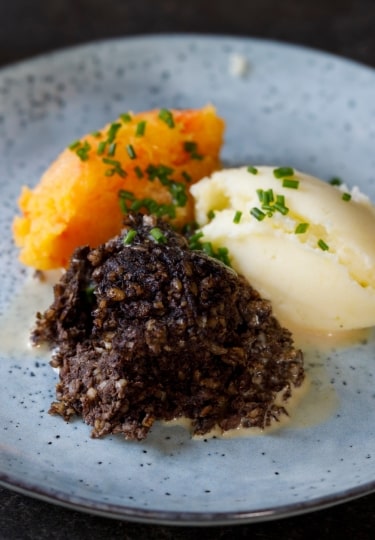What to eat in Scotland ranges from the downright dainty to the kind of hearty, meaty grub that’s perfect fuel for a caber-tossing competition.
For outsiders, the nomenclature of Scottish food is one of its most exciting elements. From neeps and tatties to the immortal haggis, it’s a joy to order—and to eat.
Whether you’re a carnivore or a vegan, there’ll be some Scottish scran, or food to tickle your fancy in the land of kilts and bagpipes. Read on for a guide to food in Scotland, and what you’ll be pairing with your peaty, smoky, saline scotch on the rocks.
Haggis
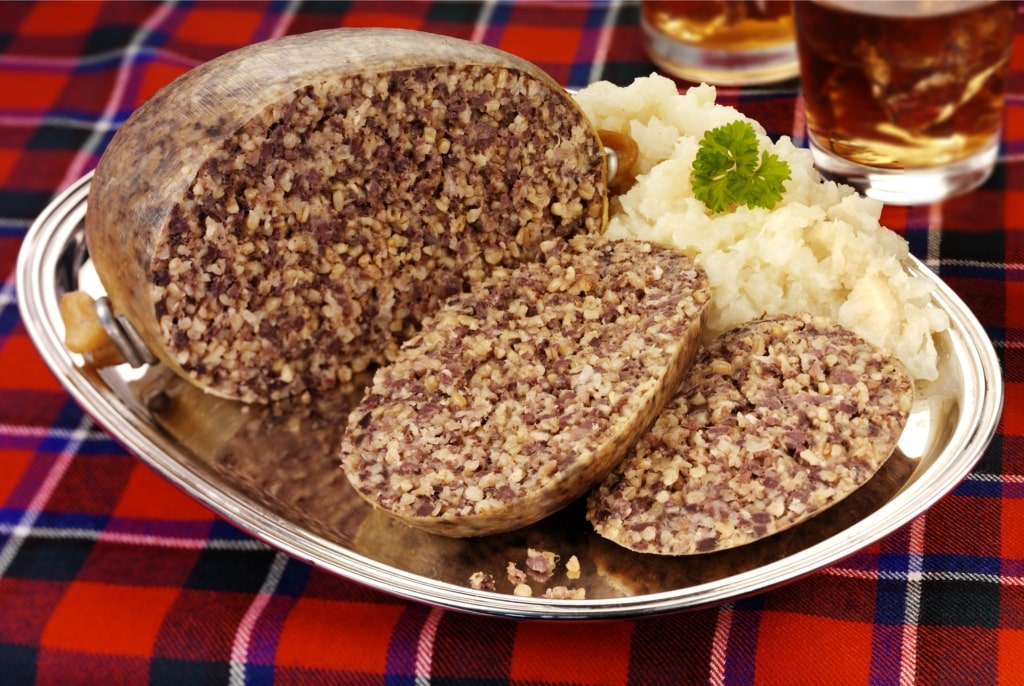
Haggis
Haggis is one of the first things people think of when considering what to eat in Scotland.
This traditional dish—essentially a large sausage—comprises minced sheep’s organs blended with suet, onion, spices, and oats. As you’d imagine with that shopping list, haggis is a recipe from the medieval cookbook. This robust mix is stuffed into a sheep’s stomach before being boiled.
Today, an artificial cellulose bag is commonly used in place of the ruminant’s stomach. Haggis is widely available in Scotland, although it enjoys pride of place at a Burns Night supper in January—the annual celebration of the poet Robert Burns. For added pomp, a piper usually accompanies the haggis as it makes its entrance.
Vegetarians will be delighted to know that veggie versions of haggis are available, featuring lentils, mushrooms, oats, and seasoning as a filling.
Neeps and Tatties
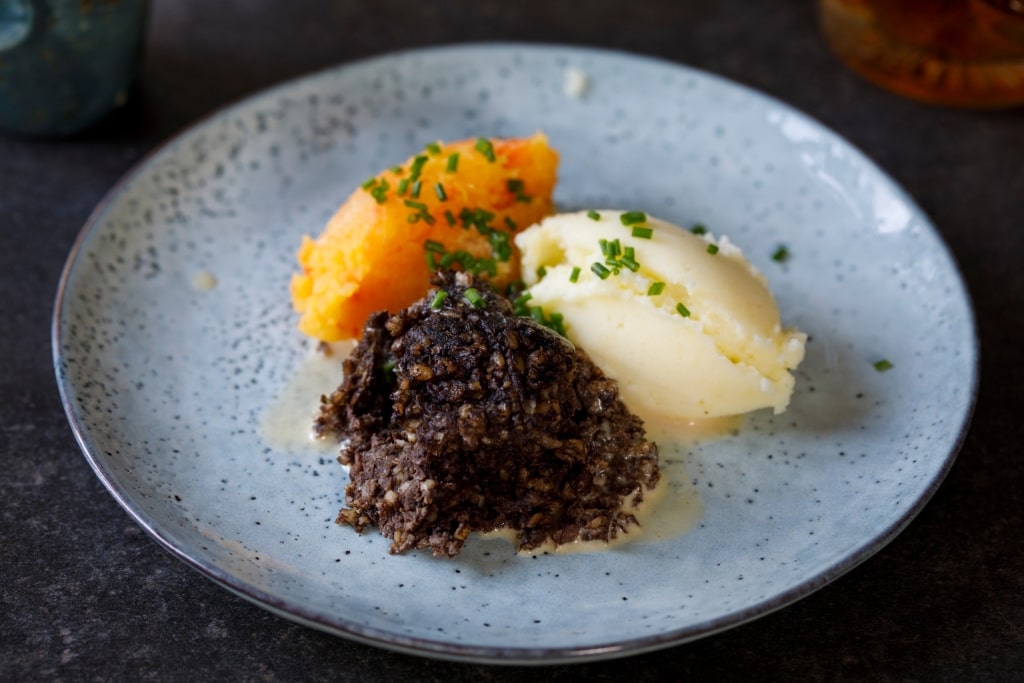
Neeps and tatties
Haggis’s dancing partner, the phrase “neeps and tatties” refers to the side of mashed swede and potatoes. This simple delightful mix is often elevated through the addition of cream and nutmeg or some grated highland cheddar, or both.
An essential Burns Night’s addition, you’ll find neep and tatties widely available throughout restaurants in Scotland.
Scottish Salmon
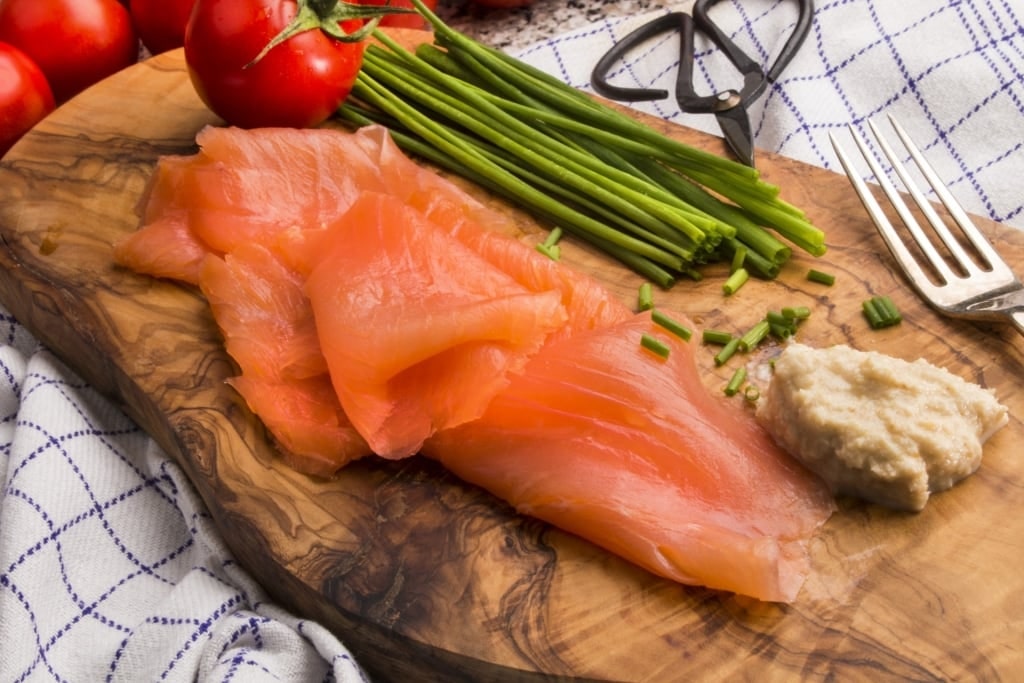
Scottish salmon
The snow-dusted munros and lilac heather of the Scottish Highlands is one of the spiritual homes of the fisherman. Clad in waders in the clear, freezing waters of rivers like the Spey and the Tweed, the fisherman casting a fly is, more often than not, hoping to catch a spirited, muscular salmon.
The rosy flesh of the salmon has been enjoyed in the Highlands for thousands of years. Today, Scottish salmon is regarded as one of the finest varieties available, thanks to the cleanliness of the environment in which it’s raised.
Whether you have it smoked, grilled, or baked, the salmon you’ll taste in Scotland is always melt-in-your-mouth delicious.
Oats
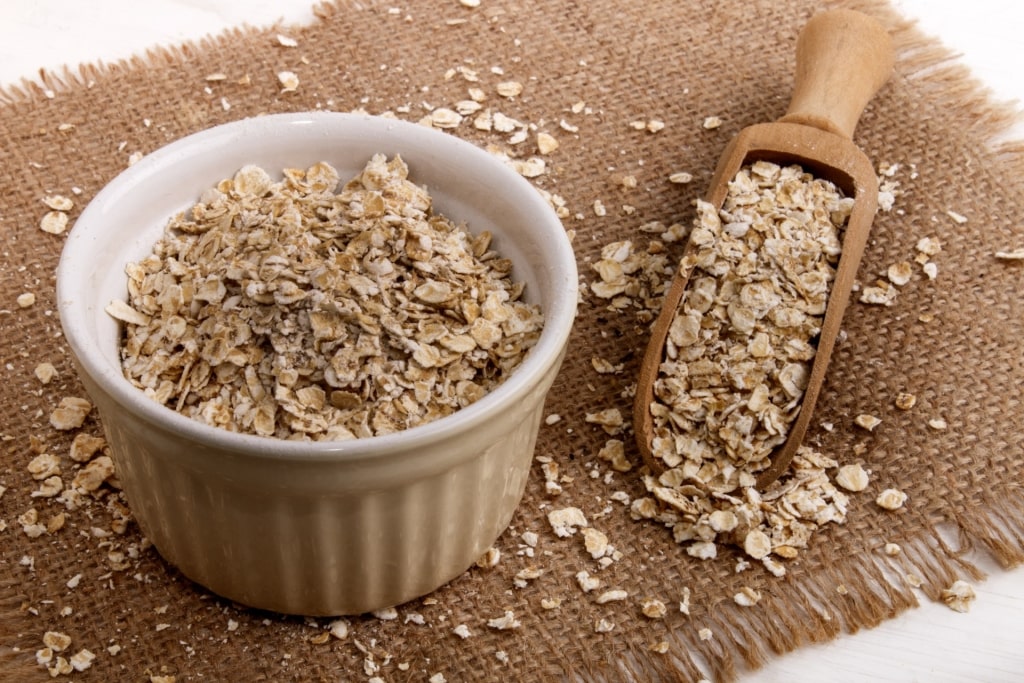
Oats
In a country notorious for its often rainy weather, a creamy, cozy bowl of porridge in the morning can go a long way.
Scottish oats have a global reputation. Part of what makes a bowl of hearty Scottish porridge so appealing is that the oats are traditionally stone-ground. This process delivers a finer consistency compared to the oats of other countries.
Oats were introduced to Scotland by the Romans and the relatively wet and blustery climate proved to be no obstruction to the cultivation of the crop. After so many centuries of oats, some unusual traditions have sprung up.
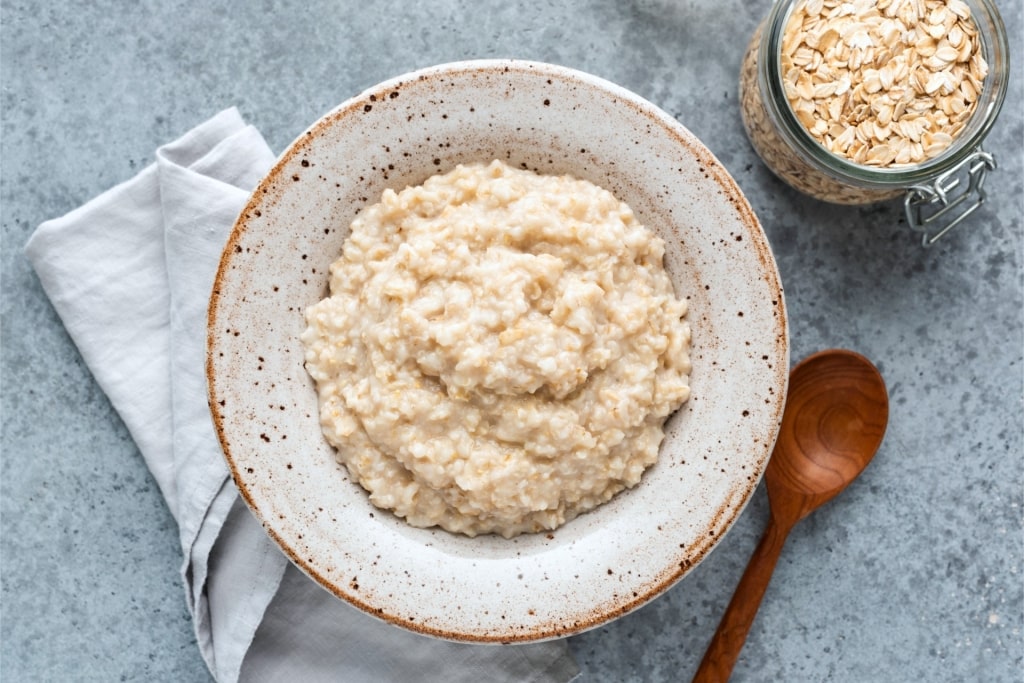
Scottish porridge
The porridge should be stirred with a wooden rod known as a “spurtle.” Additionally, according to legend, you should stir the porridge with your right hand in a clockwise motion otherwise you’ll receive a visit from Satan.
You’ll find your Scottish porridge topped with honey and berries, or just a little milk. If there’s a gale blowing outside, then you might also opt for a splash or two of whisky on top—a “wee dram”—to fortify yourself.
Read: European Food Guide
Cullen Skink
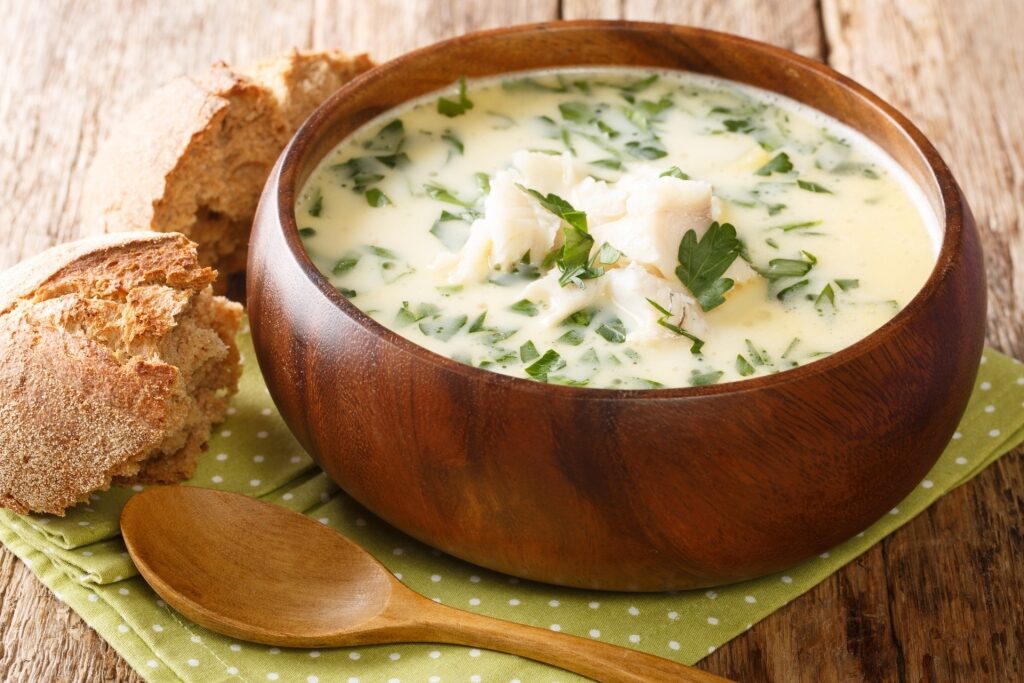
Cullen skink
Sounding like the name of a character from a Dickens novel, Cullen Skink is actually the name for Scottish seafood chowder.
The “Cullen” refers to a Scottish seaside town, the believed origin point for this dish. The “Skink”, meanwhile, refers to the fish. Most commonly, this is smoked haddock. The fish is poached, and then added to a cream, onion, and potato chowder.
Crusty bread is great for mopping up the sauce, or the more traditional accompaniment of crunchy oatcakes.
Scotch Pies
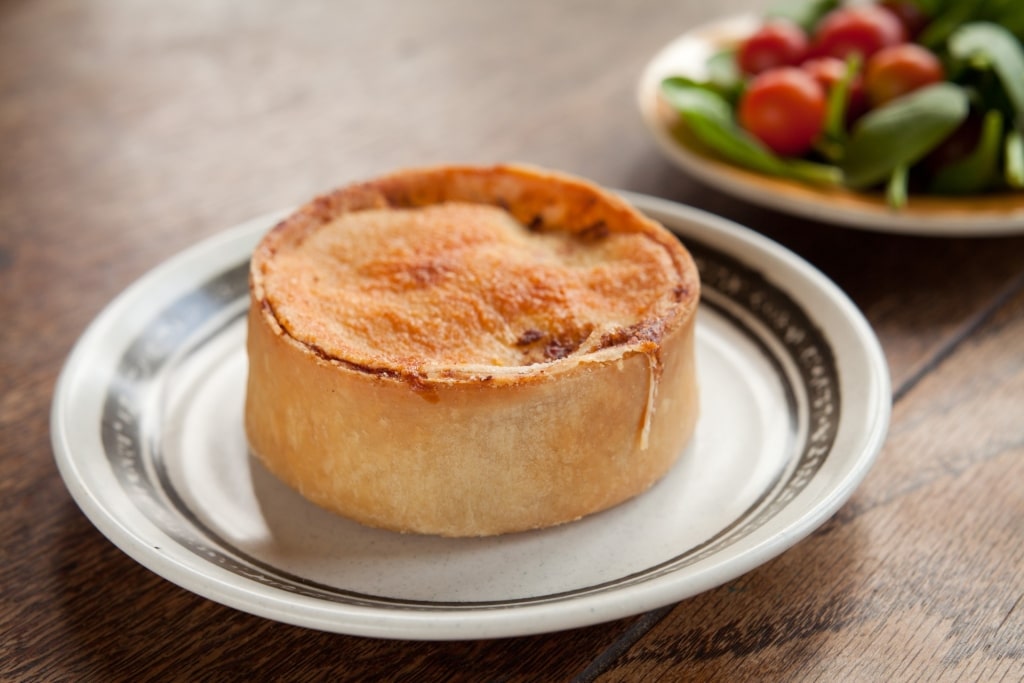
Scotch pies
Scotch pies are what to eat in Scotland when you’re on the football terraces—or what to throw in dismay when you’re attending a tense Rangers-versus-Celtic local derby.
These stout cylinders of shortcrust—traditionally filled with a warming, peppery mutton mince—are a delicious, insulating meal. Popularised by the working class, their robust design helped to enhance their portability. They’re similar to the Cornish pasty found at the sunnier end of Britain.
If you’re not eating them at the game, your scotch pie will usually arrive nestled on a bed of creamy mashed tatties with a side of mushy peas. Tangy brown sauce is a favorite condiment.
Stop into The Piemaker in Edinburgh for a galaxy of pie fillings. Choose from pies stuffed with haggis, vegetarian haggis, and macaroni cheese.
Cranachan
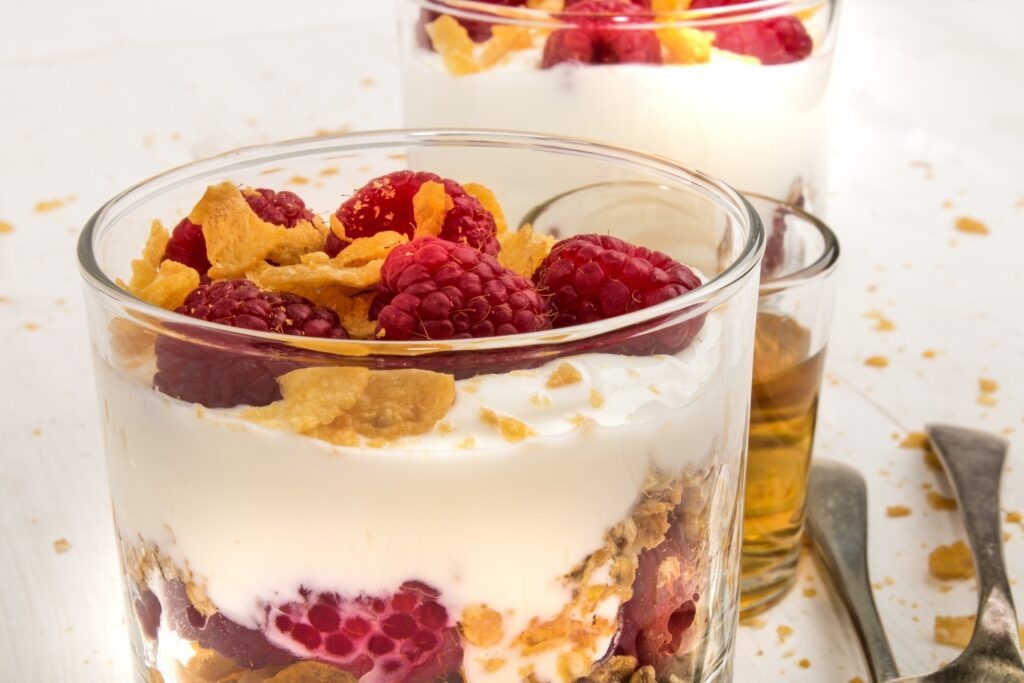
Cranachan
Essentially a Scottish take on English trifle, cranachan is a traditional chilled dessert that is also something of a digestif. It’s long been what to eat in Scotland in the summer when raspberries are at their most in-season vivid.
With cranachan, toasted oats, whipped cream, golden honey, and tart raspberries are mixed, dolloped in a glass dessert bowl, and garnished with a few more raspberries and oats. The digestif element is the whisky added to the whipped cream for a rich, added depth.
If you’re somewhere very traditional, you might have your cranachan arrive with crowdie in place of the cream. This Scottish soft cheese is one of the cranachan’s original ingredients and imbues the dish with a gentle tang.
Shortbread
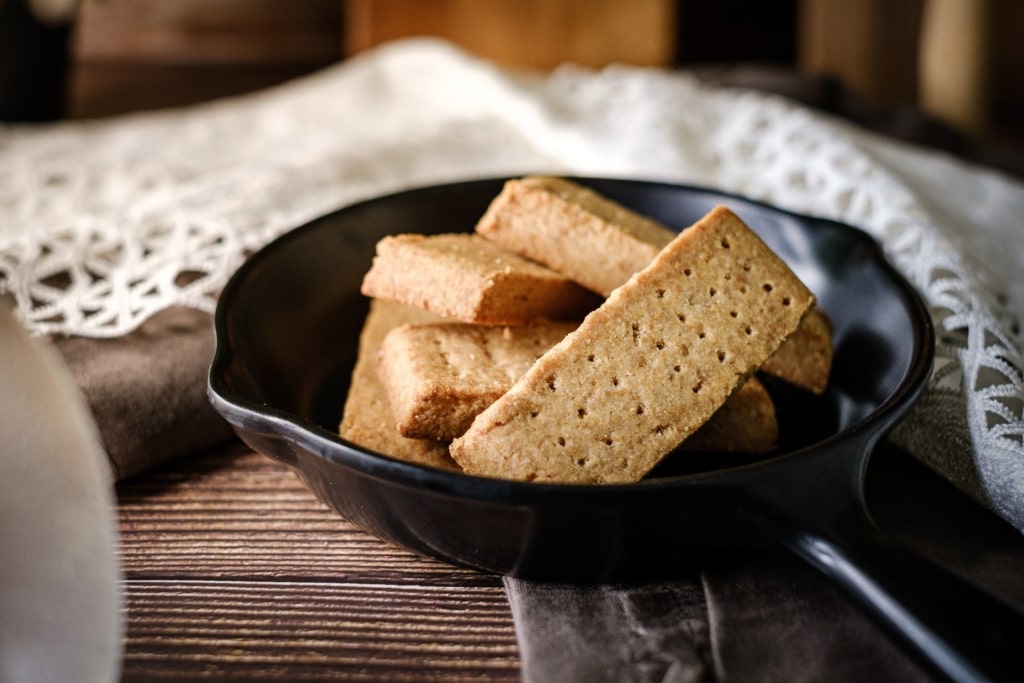
Shortbread
You’ll have tried rich, crumbly, buttery Scottish shortbread at least once in your life. Transported throughout the world in instantly recognizable tartan tins, shortbread could be considered a form of political “soft power” for this charismatic small nation.
Scottish shortbread’s medieval forebears—known as “biscuit bread”—was a much less exciting mouthful. These were essentially rusks produced from excess bread dough hardened in the oven.
Thankfully, by the 16th century, the canny cooks of the Highlands had added the all-important butter. With this, these biscuits became fit for royalty—famously Mary, Queen of Scots, was an avid fan.
You’ll find yourself offered shortbread throughout your time in Scotland, balanced on a saucer with tea or accompanying your tasting in a distillery. While they are rich treats, you should consider yourself bound to eat them by royal decree.
Arbroath Smokies
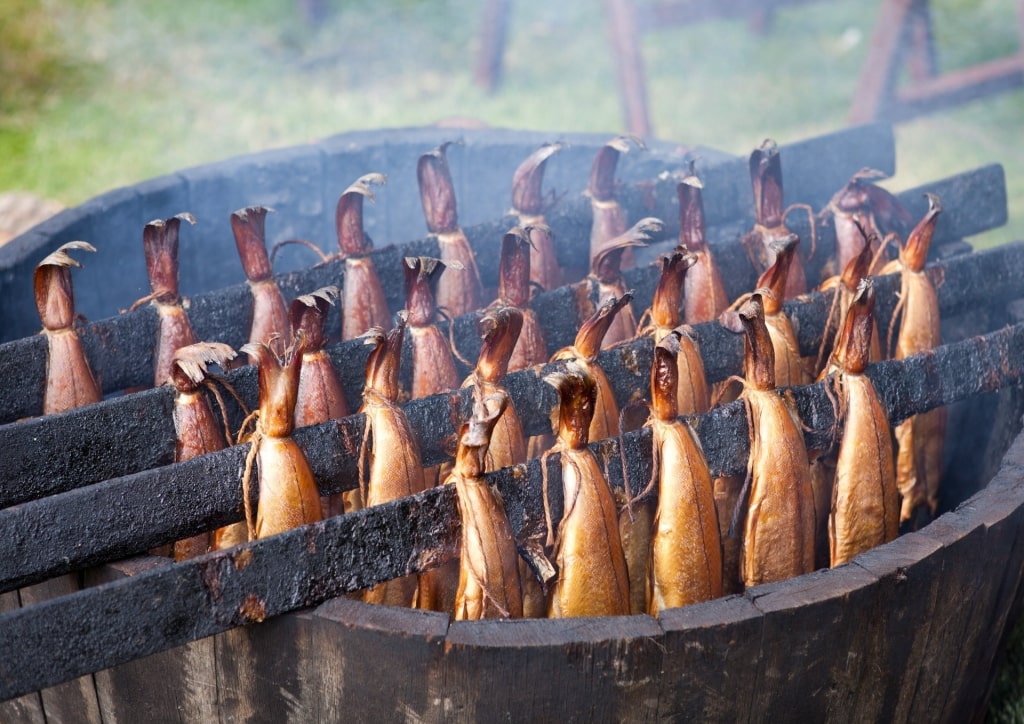
Arbroath smokies
Arbroath smokies are what to eat in Scotland if you love smoked fish. This traditional preparation is not only delicious but also comes packaged with a tasty origin myth.
A group of Vikings who settled in Scotland during the Middle Ages had their typical Scandinavian preparation of salted haddock stored in barrels. Somehow, a fire broke out and the barrels went up in flames. Come morning, however, the Vikings were delighted to discover that the fish within had become wonderfully flavored.
Today, the preparation methods are a little less incendiary. The salted haddock is strung up and dried. The smoking takes place over a hardwood fire contained within a purpose-built barrel, the fish dangling from a wooden tripod before being sealed in for about an hour.
Arbroath smokies are at their most finger-licking delicious if eaten by hand while still warm after being smoked.
Black Pudding
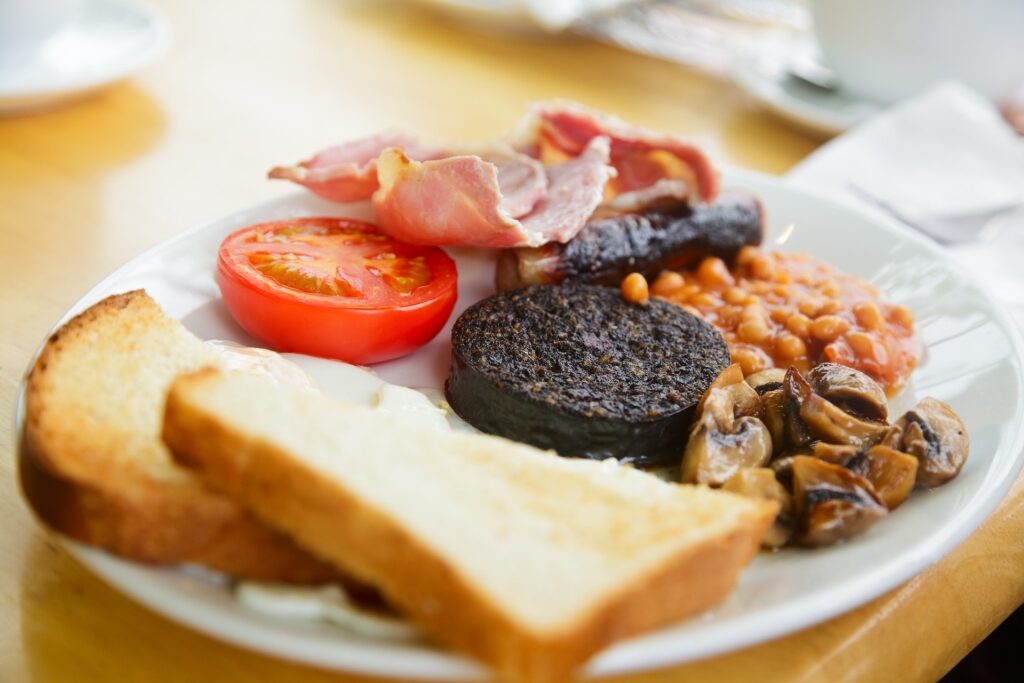
Black pudding
It’s sometimes confusing what’s described as a “pudding” in the British Isles. The equivalent of “dessert” in modern parlance, haggis can be described as a savory pudding, but it’s not what to eat in Scotland for a sweet treat at the end of a long dinner. The same goes for black pudding.
A legendary element of a traditional full breakfast in Scotland, England, or Ireland, the black pudding is a blood sausage. Coal black in hue, it’s traditionally served in Scotland as fried circular slices alongside beans, bacon, egg, sausages, and tattie scones.
A favorite throughout the British Isles, the Scottish variant of the black pudding has a slightly coarser texture and often contains barley instead of oats in the sausage mix.
Lorne Sausage
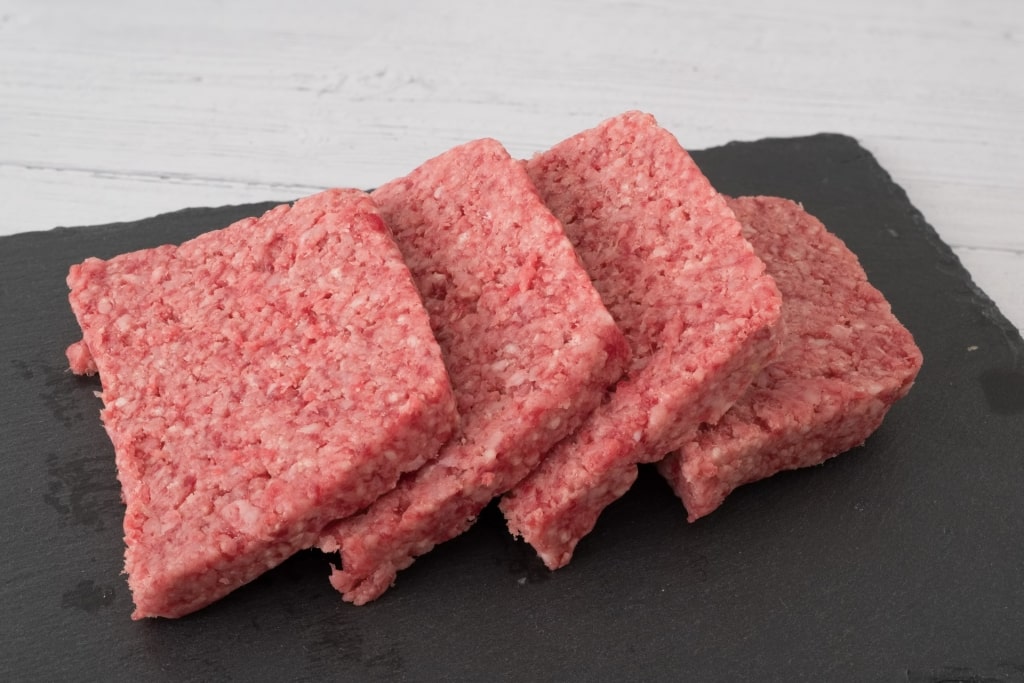
Lorne sausage
Lorne sausage is a square-shaped slice of meat that will often appear on the crowded plate of a traditional Scottish breakfast. Think of it as Scottish meatloaf.
These block sausages arrived on the menu in the 19th century, when metal baking tins began to proliferate in the country. The preparations for a Lorne Sausage are relatively straightforward. No animal stomachs or sausage casing required—the beef, pork, rusk, and spice mix is packed directly into a baking tin and cooked in the oven.
Also known as a flat or square sausage, the origins of “Lorne Sausage” as a name for this angular meat treat are a little unclear. Competing stories have it named for the Lorne region, or after a Scottish comedian who, at the time, disparaged the quality of ordinary sausages, likening their texture and flavor to doormats.
Venison
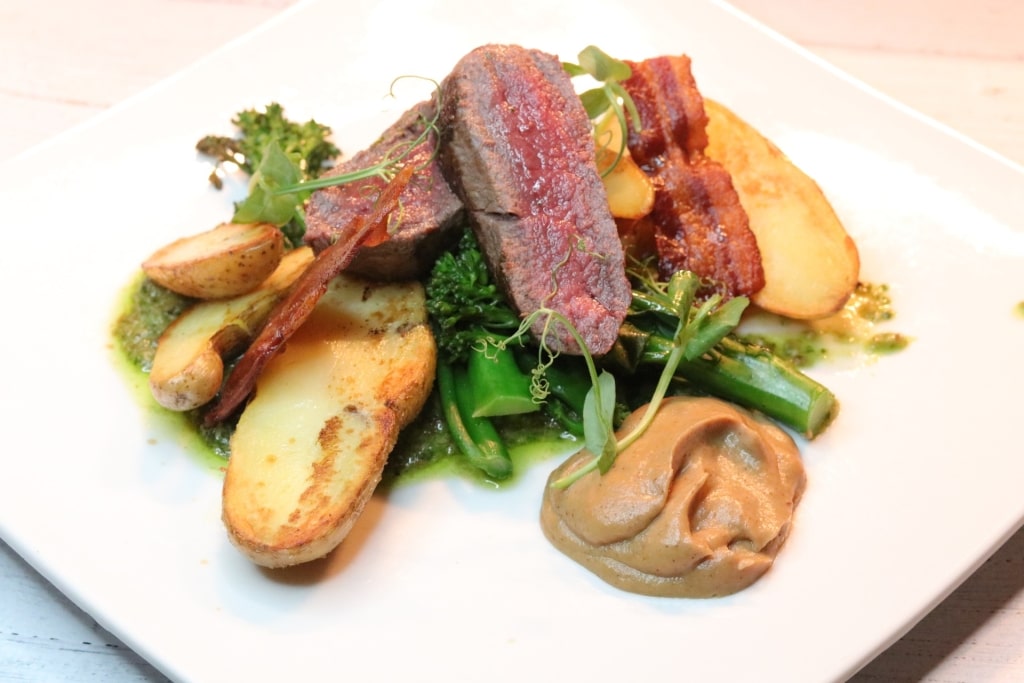
Venison
The image of a mighty stag, its muscular neck and candelabra antlers in profile, is a favorite of Scottish whisky labels. An iconic inhabitant of the Highlands, the red deer is a native of the heather and lochs. It’s been joined by other species since. These include fallow deer that were introduced by the Normans following the conquest of Britain in 1066.
Like those ancient Frenchmen, modern hunters are drawn to the majestic highlands to shoot a stag. However, that venison steak you’ve just ordered isn’t necessarily the result of sharpshooting. Deer is also farmed in Scotland, such is the demand for its flavorsome, gamey meat.
Venison makes its way into all manner of dishes in Scotland: as sausages in your full Scottish breakfast, in hearty stews, or as a delicious roast haunch.
Tablet

Tablet
Scottish tablet is a square, sugary treat similar to fudge. Made with sugar and butter, its not-so-secret ingredient is condensed milk, which gives tablet its unique sweet taste.
It’s often called “Swiss Milk tablet”, which has nothing to do with Switzerland except that the favored brand of condensed milk used in Scotland is called “Swiss Milk.”
The Scots have been breaking up these sugary tablets into bite-sized squares since the 18th century. Today, they’re as omnipresent as shortbread and are often given away in goodie bags to guests attending kilt-resplendent Scottish weddings.
Rumbledethumps
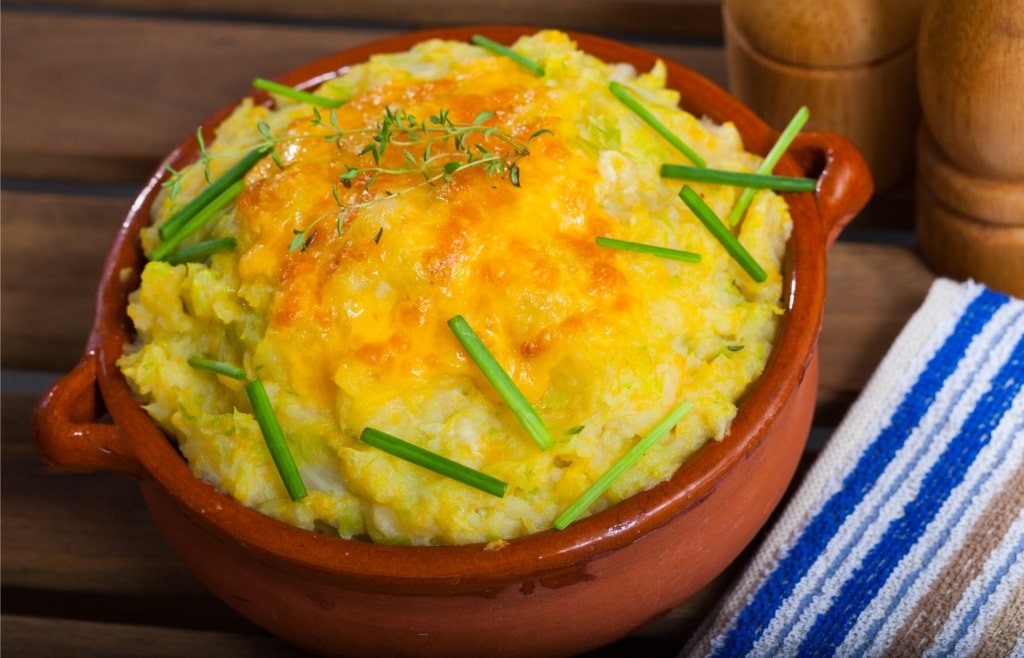
Rumbledethumps
A wonderfully onomatopoeic name, rumbledethumps refers to the noise that’s made when one prepares this popular Scottish side.
Hailing from the Borders region—the southerly stretch of Scotland that abuts northern England—rumbledethumps is a blend of mashed potato and shredded cabbage. Similar dishes include Irish colcannon, and English bubble and squeak.
The mashed cabbage and potato are topped with a tangy Highland cheddar before being baked to melt the cheese. It’s a favorite alongside a peppery steak-filled Scotch pie.
Cheese
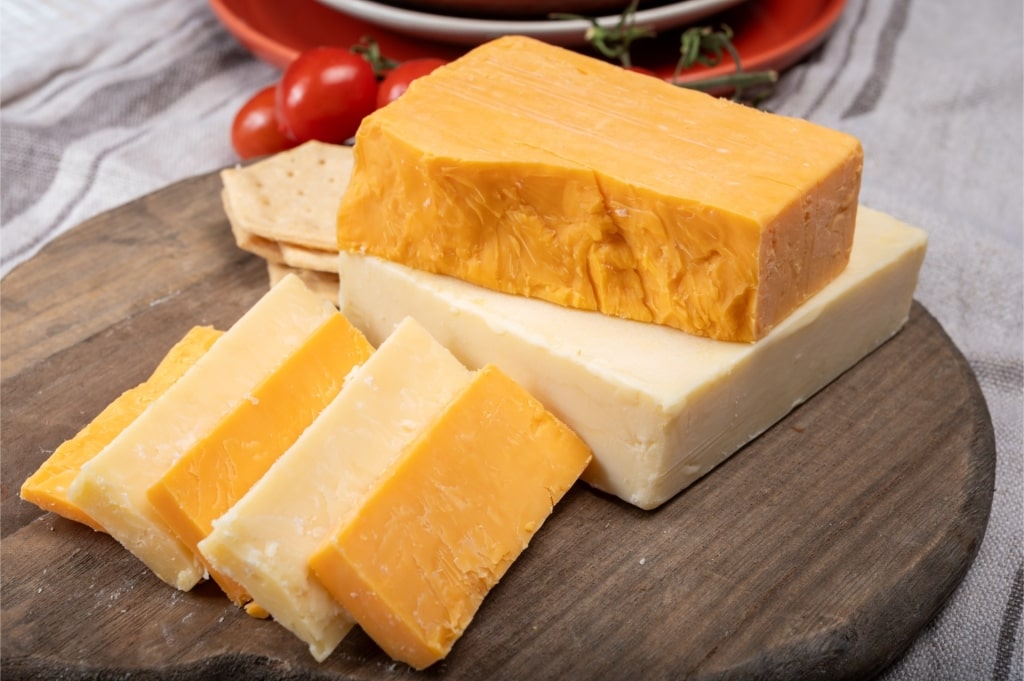
Cheese
Scotland has a robust and thriving artisan cheese industry. While visiting, be sure to keep alert to the possibility of a local cheese platter for, or in addition to dessert.
If you’re in Edinburgh or Glasgow, make time for a tasting stop at George Mewes cheesemonger. Look out for the well-regarded Lanark Blue—like a Scottish Roquefort—that combines well with Scottish oatcakes. From the same producer, try the sheep’s milk cheese, Corra Linn, with its delicious nutty, brothy flavor.
If you’re a cheddar fan, you’re in for a treat. The cheddars that hail from the islands are particularly interesting, with the Isle of Mull brand probably the best well-known. The cows that supply the milk for this cheese are fed with the spent grain husks from a local distillery— possibly the reason for the alcoholic tang in this cream-colored cheese.
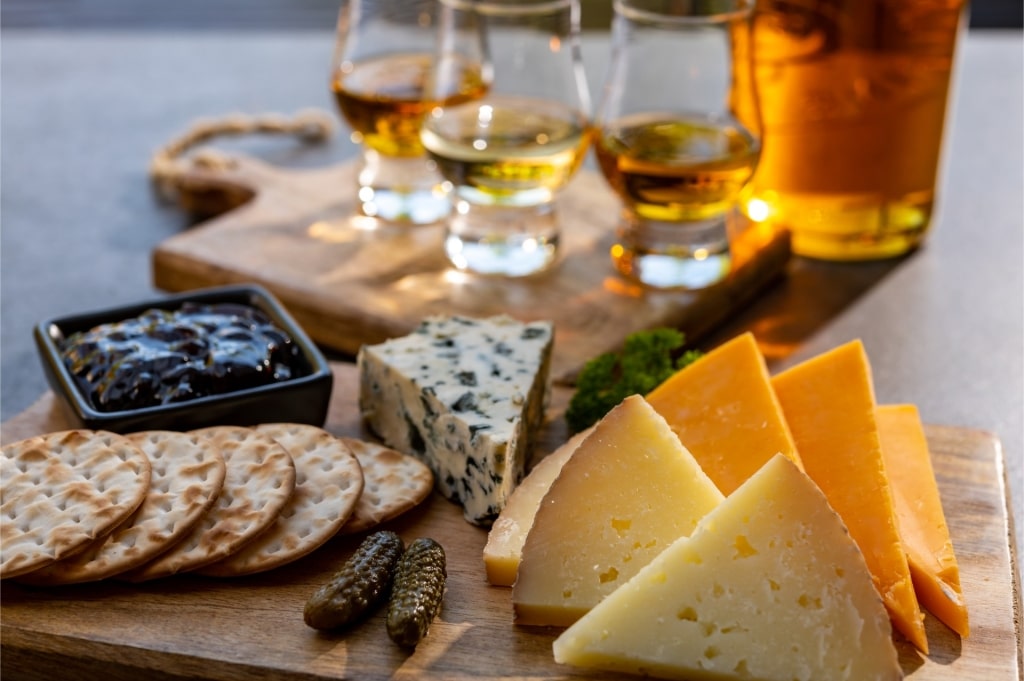
Scottish whisky and cheese
A dram of the whisky that Scotland is known for paired with the island-produced farmhouse cheddars is a memorable twosome, with the smoky whisky mingling delightfully with the tangy, nutty cheese.
If you’re looking for something truly distinctive, keep your eye peeled for crowdie or caboc. Both are small cylinders that look like logs of butter that have been dropped on the floor of a grain silo.
With a history that stretches back to the Viking era, these two fresh cheeses are rich, buttery, and offer a slight and satisfying tang. Caboc is produced with extra cream compared to crowdie’s skimmed milk and as such, is the more decadent of the two.

Edinburgh
Dive into the food in Scotland—not to mention the country’s countless distilleries—on one of Celebrity’s vacations to the British Isles. Browse and book an unforgettable cruise to Scotland today.
